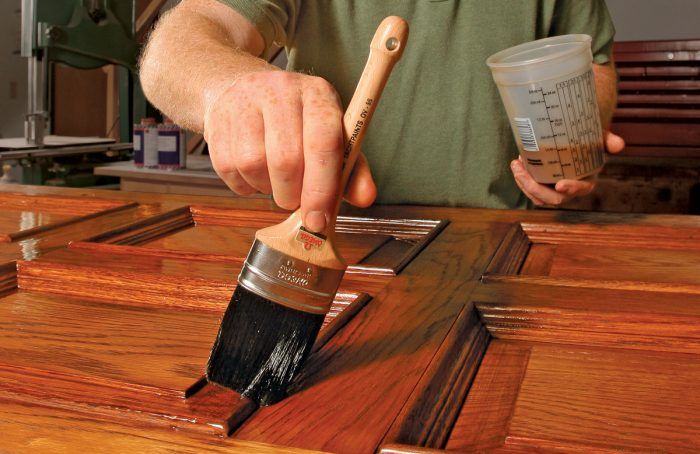Refinishing Old Oak
Cleaning, sanding, and finishing with an oil-based varnish brings new life to old wood.

Although my question has to do specifically with 75-year-old oak church pews, there must be a lot of homeowners with old wood trim and similar questions. The original finish was rubbed off over the years, and we’d like to bring back the deep richness of the oak. We did clean the wood to remove dirt and grease and are wondering what to use for refinishing.
—Ken Margeson Halifax, N.S., Canada
Mike DiBlasi, of DiBlasi Painting in Millbrook, N.Y., replies: Because the oak is now all cleaned up, the next step is to sand it all to a relatively fine grit of 220. This will help to remove all previous remnants of finish and create a uniform substrate to receive all subsequent finishes. After that, you can stain or dye the wood if you choose.
To bring out the original richness of the wood, I’d go with what was probably the original finish—most likely an oil-based varnish. I’m talking about an alkyd varnish, not a polyurethane, but that could work too. In fact, there are a great variety of products that would work, including polymerized tung oils, wiping varnishes, and water-based finishes, but there are downsides to these. Tung oil may not be available locally. Wiping varnishes (such as Waterlox) take multiple coats to build up a sheen. Water-based finishes dry quickly—sometimes too quickly to get a nice finish on large areas.
Oil-based varnish, by contrast, has a long open time, which makes it easy to blend in the brush strokes. There are plenty to choose from, and they’re available in different sheens. The first coat should be thinned approximately 10%. This will seal the wood nicely and dry quickly. Then you simply need to add additional coats, lightly sanding between them, until the aesthetic you desire is achieved. In my experience, two finish coats is usually all you need. As always, read the manufacturer’s guidelines on the label.
About the only disadvantage to oil-based varnish is the smell, but that’s a problem with any solvent-based finish, and even water-based finishes are not VOC-free. In all cases you should wear an appropriate respirator when finishing.
From Fine Homebuilding #294





























